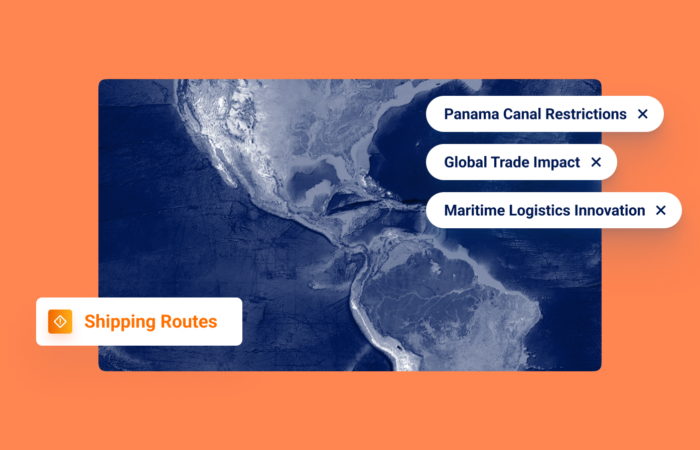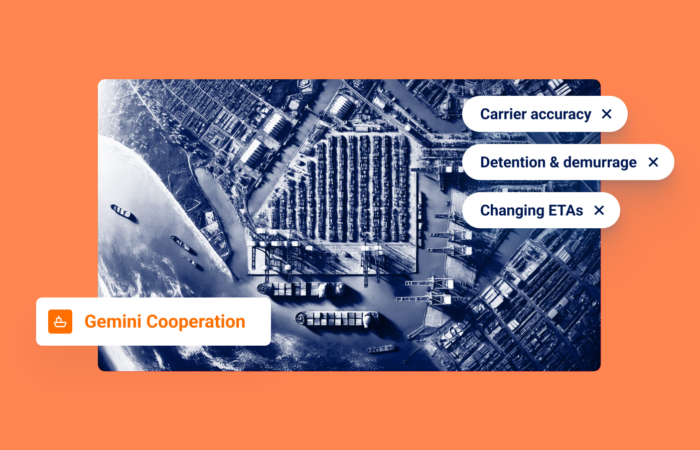Boost Supply Chain Efficiency with Container Tracking Benefits

What’s inside?
Efficient supply chain management is crucial for staying competitive. The complexity of international trade and logistics networks means organizations seek innovative solutions to optimize their supply chains. One such solution gaining significant momentum is container tracking. When it leverages the power of Maritime AI™, it can take your business to the next level. Let’s explore the various benefits of container tracking for your business.
How Maritime AI™-Powered Container Tracking Works
Before taking a more in-depth look into the benefits of container tracking, it’s important to have a basic understanding of how container tracking actually works with Maritime AI™. Windward’s container tracking guide explains: “Advanced Maritime AI™ technology uses deep learning and machine learning models that generate real-time ETA predictions for the entire global fleet of container vessels. It continuously calculates congestion levels at all container ports, providing the most accurate container ETAs.” Windward’s glossary goes on to further highlight: “These AI algorithms collect and analyze vast amounts of data from various sources. These include satellite imagery, weather patterns, and port data, to provide real-time visibility into container movements.”
Real-Time Shipment Visibility
One of the most significant advantages of container tracking is the real-time visibility it offers. Traditionally, supply chain stakeholders faced challenges in accurately tracking and monitoring the movement of containers across the ocean. With container tracking technology, it is now easy to obtain up-to-date information about the exact location and status of containers. This actionable visibility empowers organizations to proactively manage exceptions, anticipate delays, and make timely decisions to avoid disruptions.
Organizations are looking to go beyond the basics and find an actionable visibility solution that can assist in forecasting what is likely to happen. It’s clear that AI-powered insights and predictive analytics offer decision support and effective exception management for a more strategic maritime viewpoint and greater operational efficiency.
With the integration of advanced Maritime AI™ models, you can gain unparalleled visibility into all of your ocean shipments. This means you can effortlessly track and monitor your containers and bulk shipments in real-time, from origin to destination. This is critical for building a resilient supply chain and helping to optimize your entire ocean shipment operation.
Exception Management – More Than Just Visibility
As mentioned above, visibility on its own only opens up a wide view, but alerting or exception management enables you to understand what’s important and to prioritize. You can take your container tracking to the next level by implementing a proactive approach to delays. This means optimizing operations and improving the customer experience by easily identifying shipments that require attention, getting real-time updates, and the reasons for delayed arrivals.
“Exception management filters all your shipments and identifies those that are significantly or critically late, or early (which can also negatively impact your organization). You can then take appropriate action to mitigate any potential issues.” When needing to track a lot of containers, for example, 3,000 receiving alerts for them all can create a lot of noise. But, receiving alerts for a specific 10 or 20 containers only, will be a game changer,” according to one of Windward’s relatively recent blog posts.

Container Tracking = Reduced Costs
There are many extra costs that can be avoided if you have an accurate container tracking system in place. For example, demurrage and detention charges can significantly impact the efficiency and costs of international shipping operations. They are fees associated with the use of shipping containers beyond the agreed-upon free time allowed by carriers and terminals. These charges are incurred when the containers are held at the port, terminal, or other designated locations for longer than the allotted time.
By implementing container tracking and Maritime AI™, you can cross-reference the charges with the actual time your containers were in possession to validate the fees accurately. Accuracy in documenting these milestones, Actual Time of Arrival (ATA) and Actual Time of Departure (ATD), is crucial – this ensures that these timestamps are correctly recorded to establish the exact duration of container storage at ports or terminals. By having precise ATA and ATD information, you can dispute unjustified charges. When the container is in transit, you can predict delays at least 10 days in advance, providing plenty of time to mitigate potential issues.
Improved Customer Service
Container tracking enables businesses to provide better customer service by offering accurate and up-to-date information about shipments. Customers can track their containers, receive notifications about delays or changes, and maintain transparency throughout the shipping process, resulting in enhanced customer satisfaction.
Implementing container tracking for supply chain management brings numerous benefits to businesses. With real-time shipment visibility provided by Maritime AI™, organizations gain actionable insights into container movements, allowing them to proactively manage exceptions, anticipate delays, and make informed decisions. This level of visibility builds a resilient and agile supply chain. Embracing container tracking technology and leveraging Maritime AI™ empowers businesses to streamline operations, optimize efficiency, and create a competitive edge in the dynamic world of supply chain management.












